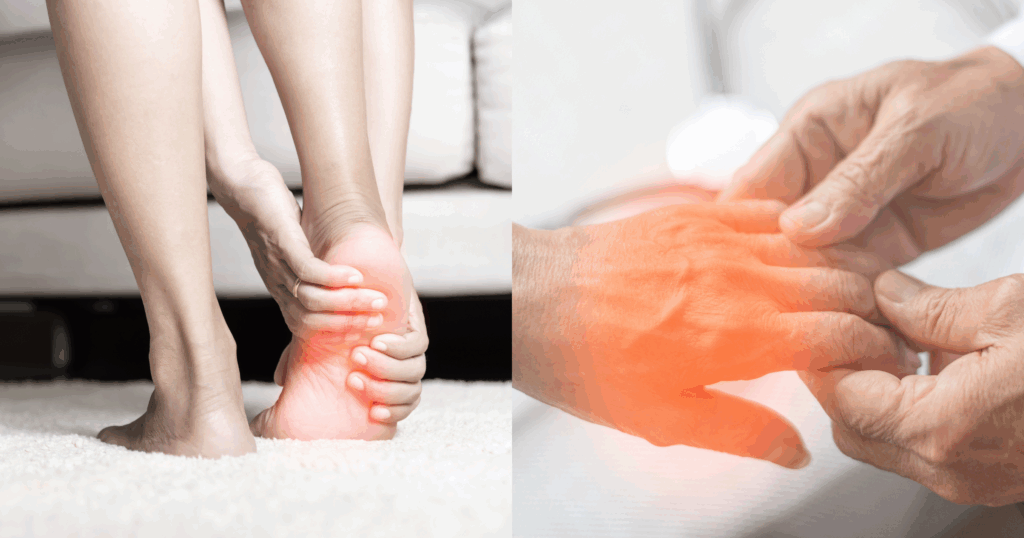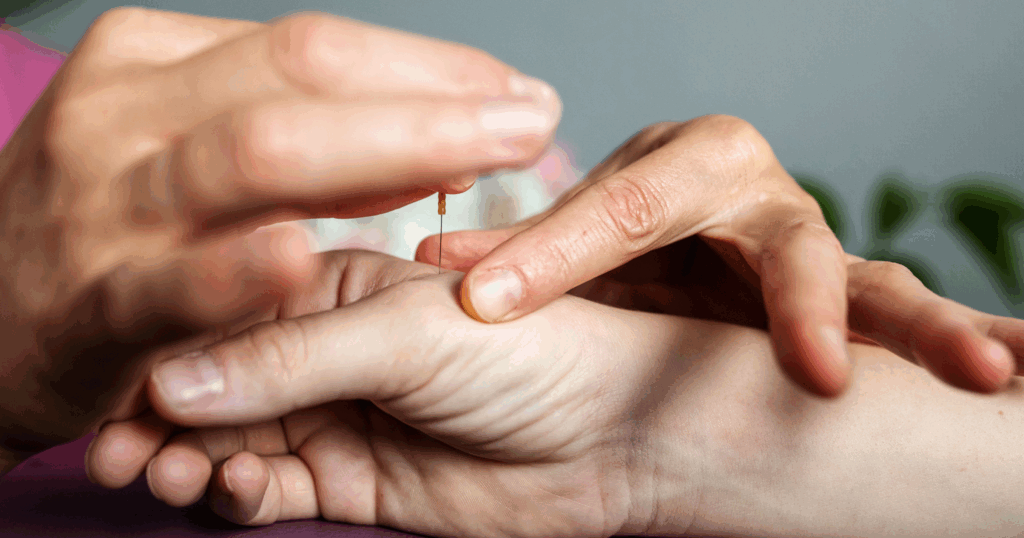Acupuncture for Neuropathy: A Holistic Approach to Managing Nerve Pain
Neuropathy is a condition that quietly but profoundly alters the way our bodies communicate with the world. It disrupts the delicate signals traveling through our nerves, leading to sensations that can range from mildly annoying tingles to debilitating pain and numbness. Peripheral neuropathy, the most common form, affects millions worldwide, often stealing away the simple joys of walking barefoot on grass or holding a loved one’s hand without discomfort.
Despite advances in modern medicine, many patients find conventional treatments insufficient or burdened with side effects. Acupuncture, an ancient healing art rooted in Traditional Chinese Medicine (TCM), offers a beacon of hope for those grappling with neuropathy. By gently stimulating specific points on the body, acupuncture aims to restore balance and promote the body’s natural healing processes.
Acupuncture for Neuropathy: A Holistic Approach to Managing Nerve Pain
Neuropathy is a condition that quietly but profoundly alters the way our bodies communicate with the world. It disrupts the delicate signals traveling through our nerves, leading to sensations that can range from mildly annoying tingles to debilitating pain and numbness. Peripheral neuropathy, the most common form, affects millions worldwide, often stealing away the simple joys of walking barefoot on grass or holding a loved one’s hand without discomfort.
Despite advances in modern medicine, many patients find conventional treatments insufficient or burdened with side effects. Acupuncture, an ancient healing art rooted in Traditional Chinese Medicine (TCM), offers a beacon of hope for those grappling with neuropathy. By gently stimulating specific points on the body, acupuncture aims to restore balance and promote the body’s natural healing processes.
Key Takeaways
- Acupuncture for neuropathy can ease pain and restore nerve function, especially for diabetic and chemotherapy-induced cases.
- Electroacupuncture and platelet-rich plasma injections are emerging options to boost nerve repair for foot neuropathy.
- Green tea, turmeric drinks, and hydration help manage neuropathy by lowering inflammation and supporting nerve circulation.
- Personalized care combining acupuncture, medication, and lifestyle changes delivers the best results for long-term nerve health.
Understanding Neuropathy
What is Neuropathy?
Neuropathy refers to damage or dysfunction of the nerves, which can interrupt the vital communication between the brain, spinal cord, and the rest of the body. When peripheral nerves are involved, this is called peripheral neuropathy. These nerves control sensation, movement, and autonomic functions like sweating and blood pressure regulation. When they falter, the consequences ripple through daily life in unexpected ways.
Types of Neuropathy
Neuropathy is not a one-size-fits-all diagnosis. It manifests in diverse forms, each with unique causes and challenges:
- Peripheral Neuropathy: Often idiopathic or related to systemic conditions.
- Diabetic Peripheral Neuropathy (DPN): A common complication of diabetes, causing nerve damage due to high blood sugar.
- Chemotherapy-Induced Peripheral Neuropathy (CIPN): Resulting from nerve toxicity caused by cancer treatments.
- Injury-Related Neuropathy: Trauma or compression injuries affecting nerve function.
- Idiopathic Neuropathy: When no clear cause is identified, adding frustration to the patient experience.
Common Symptoms
The symptoms of neuropathy paint a complex picture — sometimes subtle, sometimes severe:
- Persistent pain described as burning, stabbing, or electric shocks
- Numbness or reduced sensation, increasing risk of injury
- Tingling or “pins and needles” sensations
- Muscle weakness or loss of coordination
- Sensitivity to touch or temperature changes
These symptoms often worsen at night, robbing patients of restful sleep and peace of mind.
Causes and Risk Factors of Neuropathy
Neuropathy arises from a variety of triggers: metabolic imbalances like diabetes, toxic exposures including chemotherapy drugs, physical injuries, infections, autoimmune diseases, and genetic predispositions. Lifestyle factors such as alcohol abuse and nutritional deficiencies can also contribute. Understanding the root cause is critical for effective treatment.
Impact of Neuropathy on Quality of Life
Neuropathy’s toll extends beyond physical symptoms. Chronic pain and sensory loss can lead to anxiety, depression, social withdrawal, and a diminished sense of independence. Everyday activities become daunting, and the emotional weight often goes unspoken. This is why treatments that address both the body and mind, like acupuncture, are so valuable.
How Acupuncture May Help Neuropathy: Mechanisms of Action
Balancing Qi and Blood Flow: The Traditional Chinese Medicine Perspective
In TCM, neuropathy is often viewed as a disruption in the flow of qi (vital energy) and blood through the meridians. Stagnation or deficiency in these flows leads to pain and dysfunction. Acupuncture seeks to unblock and harmonize these pathways, restoring vitality and function. This holistic approach addresses the root imbalance rather than just the symptoms.
Stimulating the Nervous System and Releasing Endorphins
Modern neuroscience reveals that acupuncture activates the nervous system in profound ways. Needle stimulation triggers the release of endorphins and other natural painkillers, which modulate pain perception and provide relief. This neurochemical cascade helps to quiet the overactive pain signals that characterize neuropathy.
Modulating Nerve Pathways to Reduce Pain Sensitivity and Inflammation
Acupuncture also influences the central and peripheral nervous systems by modulating neurotransmitters such as serotonin and norepinephrine. This modulation reduces nerve hyperexcitability and inflammation, two key drivers of neuropathic pain. Additionally, acupuncture can suppress the activity of glial cells, which play a role in maintaining chronic pain states.
Improving Blood Circulation and Promoting Nerve Regeneration
Enhanced microcirculation is another critical benefit. Improved blood flow nourishes damaged nerves, facilitating repair and regeneration. Studies have shown acupuncture can increase nerve conduction velocities, suggesting functional recovery. This is especially important in diabetic and chemotherapy-induced neuropathies where vascular compromise is common.
The Role of Electroacupuncture and Other Advanced Techniques
Electroacupuncture, which applies mild electrical currents through needles, amplifies these effects by providing consistent stimulation. This method has shown promising results in accelerating nerve healing and reducing pain intensity. Other specialized techniques like fire needling and warm needling target stubborn areas of nerve dysfunction, offering tailored treatment options.
Scientific Evidence Supporting Acupuncture for Neuropathy
The growing body of clinical research affirms acupuncture’s potential as a valuable therapy for neuropathy. Recent randomized controlled trials and meta-analyses have demonstrated significant improvements in pain scores, nerve conduction studies, and quality of life measures.
Effectiveness for Specific Neuropathy Types
- Diabetic Peripheral Neuropathy: Research highlights acupuncture’s ability to enhance neural blood flow, promote nerve regeneration, and improve glucose metabolism, leading to symptom relief and functional gains.
- Chemotherapy-Induced Peripheral Neuropathy: Clinical trials report reduced pain, improved sensory nerve action potentials, and better physical functioning after acupuncture, often combined with medication.
- Neuropathy Due to Spinal Cord Injury: Though research is more limited, acupuncture shows promise in reducing neuropathic pain and improving motor function.
- Other Etiologies: Patients with idiopathic or trauma-related neuropathies report symptom improvements and decreased reliance on analgesics.
Outcomes Measured
Studies typically evaluate pain intensity, nerve conduction velocity, sensory and motor function, and patient-reported quality of life. While results are encouraging, variability in study design and acupuncture protocols calls for further high-quality research.
Benefits of Acupuncture for Different Types of Neuropathy
Diabetic Peripheral Neuropathy
Acupuncture has been found to significantly reduce pain and numbness in diabetic neuropathy patients. Electroacupuncture, in particular, enhances nerve function by improving blood flow and stimulating nerve regeneration. This dual action addresses both symptom relief and underlying pathology.
Chemotherapy-Induced Peripheral Neuropathy (CIPN)
Acupuncture’s role in CIPN is increasingly recognized. Core acupoints such as LI4, ST36, LI11, LR3, and SP6 are frequently used to reduce neuropathic pain and improve nerve conduction velocities. Meta-analyses confirm that acupuncture not only alleviates pain but also enhances patients’ quality of life during and after chemotherapy.
Neuropathy from Spinal Cord Injury and Other Causes
Though more research is needed, acupuncture has shown potential in managing neuropathic pain and improving function in patients with spinal cord injuries and other neuropathies. The holistic nature of acupuncture may help address the complex interplay of symptoms in these cases.
Idiopathic and Other Neuropathies
Patients with idiopathic neuropathy often experience meaningful symptom relief through acupuncture, including better sleep quality and reduced analgesic use. Nerve conduction studies also suggest functional improvements, highlighting acupuncture’s role beyond placebo.
Types of Acupuncture Techniques for Neuropathy
Manual Acupuncture
Manual acupuncture is a time-honored technique that involves inserting ultra-fine needles into specific points on the body to encourage the smooth flow of qi and stimulate natural healing. Its gentle, precise approach makes it highly adaptable to individual patient needs, especially for neuropathy sufferers. This method remains a cornerstone of acupuncture therapy due to its effectiveness and minimal discomfort.
Electroacupuncture
Electroacupuncture enhances traditional needling by delivering mild electrical pulses through the needles, which amplifies nerve stimulation and accelerates tissue repair. Treatment protocols often recommend sessions twice a week over several weeks to maximize nerve regeneration and pain relief. Patients frequently report faster and more sustained improvements compared to manual acupuncture alone.
Fire Needling and Warm Needling
Fire needling and warm needling introduce controlled heat to acupuncture points, which helps dissolve stubborn blockages and invigorate local circulation. These techniques are especially beneficial for chronic neuropathic pain that resists standard treatment methods. The warmth also promotes deeper tissue healing, offering relief where other approaches may fall short.
Combination with Chinese Herbal Medicine
Pairing acupuncture with personalized Chinese herbal medicine creates a synergistic effect that addresses both symptoms and underlying systemic imbalances. Herbal formulas can nourish nerves, reduce inflammation, and support overall vitality alongside acupuncture’s targeted stimulation. This integrated approach often leads to more comprehensive and lasting improvements in neuropathy management.
Integrating Acupuncture with Conventional Neuropathy Treatments
Lifestyle Modifications: Exercise, Diet, Alcohol Moderation
Acupuncture achieves its greatest benefits when combined with healthy lifestyle choices such as regular exercise, a nutrient-rich diet, and limiting alcohol consumption. These habits help nourish and protect nerves, creating an environment where healing can flourish. Together, they form a foundation that supports long-term nerve health and symptom management.
Medications and Physical Therapy
When paired with medications and physical therapy, acupuncture can amplify symptom relief and improve functional outcomes for neuropathy patients. This integrated approach often allows for lower medication doses, minimizing side effects and enhancing quality of life. Coordinated care ensures that each therapy complements the others for a more effective recovery.
Complementary Therapies and Holistic Approaches
Incorporating mind-body practices like meditation, yoga, and tai chi alongside acupuncture addresses the emotional and physical stresses that exacerbate neuropathy symptoms. These therapies promote relaxation, reduce anxiety, and improve overall well-being, which can positively influence pain perception. Together, they create a balanced and holistic healing experience.
Importance of Multidisciplinary Care
Effective neuropathy management thrives on collaboration among neurologists, acupuncturists, physical therapists, and mental health professionals. This team-based approach allows for personalized treatment plans that address the complex nature of neuropathic conditions. By combining diverse expertise, patients receive comprehensive care tailored to their unique needs.
Embracing Acupuncture as a Path to Neuropathy Relief
Acupuncture offers a unique blend of ancient wisdom and modern science to address the complex challenges of neuropathy. Its ability to reduce pain, improve nerve function, and enhance quality of life makes it a compelling option for patients seeking alternatives or complements to conventional treatments. We encourage you to consult with your healthcare providers to explore how acupuncture might fit into your neuropathy care. At ACA Acupuncture & Wellness, we are committed to supporting your journey toward healing with compassion, expertise, and personalized care.
Sources:
Dimitrova, A., Murchison, C., & Oken, B. (2017). Acupuncture for the Treatment of Peripheral Neuropathy: A Systematic Review and Meta-Analysis. The Journal of Alternative and Complementary Medicine, 23(3), 164–179. https://doi.org/10.1089/acm.2016.0155
Dietzel, J., Habermann, I. V., Hörder, S., Hahn, K., Meyer-Hamme, G., Ortiz, M., Hua, K., Stöckigt, B., Bolster, M., Grabowska, W., Roll, S., Binting, S., Willich, S. N., Schröder, S., & Brinkhaus, B. (2023). Acupuncture in Patients with Diabetic Peripheral Neuropathy-Related Complaints: A Randomized Controlled Clinical Trial. Journal of Clinical Medicine, 12(6), 2103. https://doi.org/10.3390/jcm12062103
Feng, Z., Cui, S., Yang, H., Wang, Y., Zhou, X., Wong, J., Lai, L., Yang, Z., Huang, B., Zheng, H., & Xu, M. (2023). Acupuncture for neuropathic pain: A meta-analysis of randomized control trials. Frontiers in Neurology, 13. https://doi.org/10.3389/fneur.2022.1076993
Frequently Asked Questions
Will acupuncture help neuropathy?
Acupuncture has demonstrated promising results in reducing neuropathic pain and improving nerve function for many patients. Clinical studies, especially in diabetic and chemotherapy-induced neuropathies, show significant pain relief and enhanced nerve conduction after several treatment sessions. However, individual responses vary, and some patients may require a tailored approach or additional therapies to achieve optimal results.
What is the most effective treatment for neuropathy?
The most effective neuropathy treatment depends largely on the underlying cause and symptom severity. A multidisciplinary approach combining medications, lifestyle changes, physical therapy, and complementary treatments like acupuncture often provides the best outcomes. Acupuncture can help manage pain and improve nerve function while minimizing medication side effects. Personalized care plans developed with healthcare professionals are key to addressing neuropathy holistically.
How long does it take for acupuncture to work for neuropathy?
Many patients notice some symptom improvement within the first few acupuncture sessions, typically around 4 to 6 treatments. Research suggests that a full course of 8 to 16 sessions over 6 to 8 weeks is often needed to achieve sustained pain relief and functional gains. Treatment frequency of about twice per week has been shown to optimize results, especially in chemotherapy-induced neuropathy. If no improvement occurs within 6 weeks, it may be necessary to reassess the treatment plan.
What is the new treatment for neuropathy in the feet?
Emerging treatments for foot neuropathy include electroacupuncture, which uses gentle electrical stimulation to enhance nerve repair and pain relief. Low-level laser therapy and regenerative medicine techniques, such as platelet-rich plasma injections, are also gaining attention for their potential to promote nerve healing. These newer approaches are often used alongside traditional acupuncture and conventional care to maximize benefits. Ongoing research continues to refine these therapies for better patient outcomes.
What drink is good for neuropathy?
Anti-inflammatory drinks like green tea and turmeric-infused beverages may support nerve health by reducing oxidative stress and inflammation. Staying well-hydrated with water is essential for maintaining proper nerve function and circulation. Some patients also find benefits from drinks rich in antioxidants, such as blueberry or ginger teas. However, no single drink cures neuropathy; a balanced diet combined with medical treatment is crucial.
What triggers neuropathy in the feet?
Neuropathy in the feet can be triggered by a variety of factors including diabetes, chemotherapy, infections, physical trauma, and nutritional deficiencies such as vitamin B12. Chronic conditions that impair blood flow or cause nerve damage are common culprits. Lifestyle factors like excessive alcohol consumption and smoking can also contribute to nerve deterioration. Identifying and managing these triggers is vital to preventing progression and improving symptoms.
Contact ACA Acupuncture & Wellness
Get in Touch
Newsletter Sign Up
LOCATIONS
MANHATTAN
QUEENS
NEW JERSEY
CALIFORNIA

ACA Franchise Opportunities
The over $4 billion US acupuncture market offers a great opportunity with over 10% annual growth rates and a continuing flow of new patients interested in the benefits of acupuncture.







